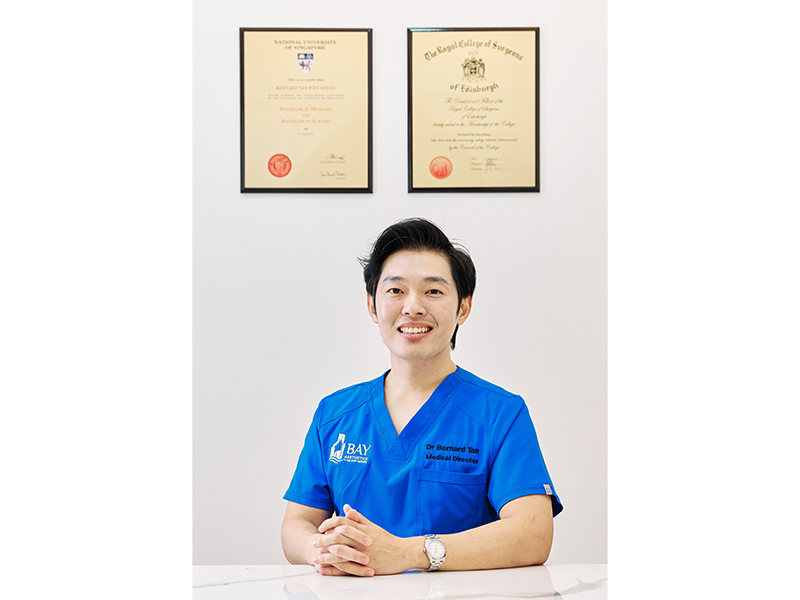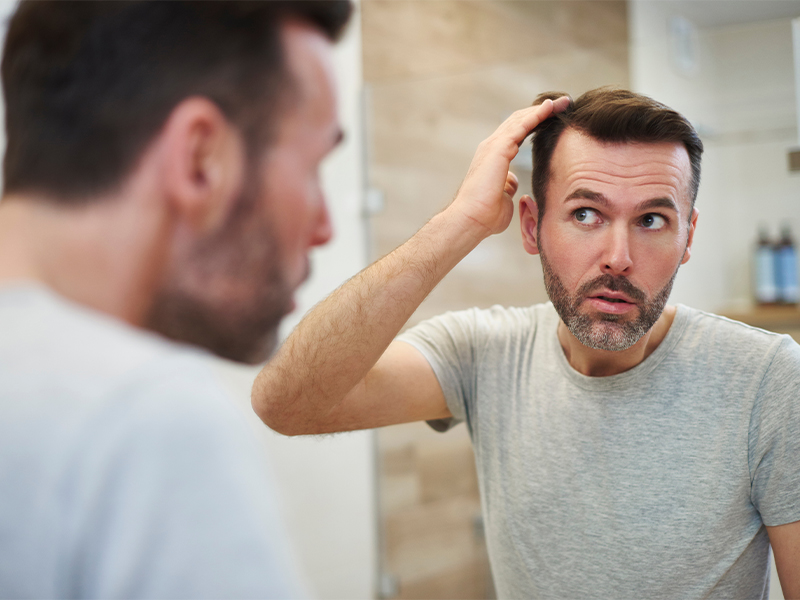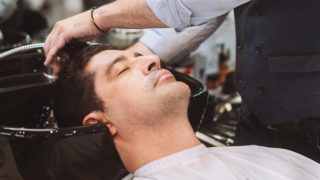Losing hair is frustrating, especially when it strikes without warning. Bay Aesthetics Clinic’s medical director and founder DR BERNARD TAN is passionate about the condition. In fact, he recently spoke on the topic of hair rejuvenation at a Symposium Dinner hosted by Calecim Professional. Here, he breaks down the most common hair-loss conditions he sees in his patients, such as telogen effluvium and pattern baldness. He also recommends some cutting-edge treatments for those who are losing hair, from hair transplants to hair serums!

Three common conditions
#1 Androgenetic alopecia – losing hair over a period of time
Known as male and female pattern hair loss, this affects more than half the population by age 50. It’s a gradual issue related to genetics, hormones and ageing. In men, it’s observed as a receding hairline and losing hair resulting in bald spots on the head’s top. Meanwhile, women experience thinning along the parting. The speed of hair loss varies, but it usually happens over months to years. In the early and middle stages of losing hair, treatments like sprays and pills can help bring hair back. If hair loss is severe, though, it may require surgery or a hair transplant.
#2 Telogen effluvium – temporarily losing hair in large clumps
This acute hair-loss condition is triggered by stressors like childbirth, trauma, medical issues or emotional strain. It sees a large proportion of hairs entering a “dormant phase” called telogen, with men or women losing hair in large clumps. This typically lasts for three to six months, resulting in noticeably thinner hair on patients. Happily, it’s a short-lived condition; follicles usually resume growth within six months.
#3 Chronic disease or medication-related hair loss
A range of medical conditions and medications can also cause a person to lose their hair. Deficiencies in iron and folate, rapid weight loss and hypothyroidism may also lead to losing hair, while the use of antidepressants, immunosuppressants or chemotherapy drugs may affect the function of the hair follicles, causing hair loss. Hair loss is a medical condition, and individuals who are suffering from it should consult a qualified medical professional for a detailed hair-loss consultation.
Are you losing hair? Treat it with three cutting-edge treatments
#1 Calecim Advanced Hair System (AHS)
This latest breakthrough is a hair serum that uses stem cell-derived growth factors and exosomes to help treat hair loss in men and women. Containing multiple growth factors and cytokines, it’s ideal for early to moderate male and female pattern hair loss as well as telogen effluvium. Patients can see results after three months of weekly treatments.
#2 Regenera Activa
Utilising the patient’s own stem cells and growth factors harvested from the scalp, this autologous stem-cell hair-restoration treatment stimulates the existing hair follicles to grow hair shafts faster and thicker, while reducing hair loss. It involves harvesting small grafts which are disaggregated through the Regenera Activa device. Extracted live stem cells and growth factors are then injected into areas of hair loss to boost growth. It’s most effective for early to moderate pattern hair loss as well as telogen effluvium. Results can be seen in three months.
#3 Follicular Unit Extraction (FUE) hair transplant
If you have been losing hair for a lengthy period, a great solution for advanced hair loss is FUE. It uses healthy hair grafts obtained from donor areas at the back and side of the head and transplants them to areas of hair loss such as the frontal hairline or the crown area. This restores the appearance of a full head of hair. The procedure takes between four to eight hours depending on the number of grafts required, and the complexity. The transplanted hair follicles take three to six months to grow out, with results seen in six to 12 months
Find out more at Bay Aesthetics Clinic, #B2-12 Marina Bay Link Mall, Marina Bay Financial Centre.
8428 7811 | bayclinic.sg
This article first appeared in the October 2023 edition of Expat Living. You can purchase the latest issue or subscribe so you never miss a copy!
To make the most of living in Singapore, read our latest City Guide here for free!






